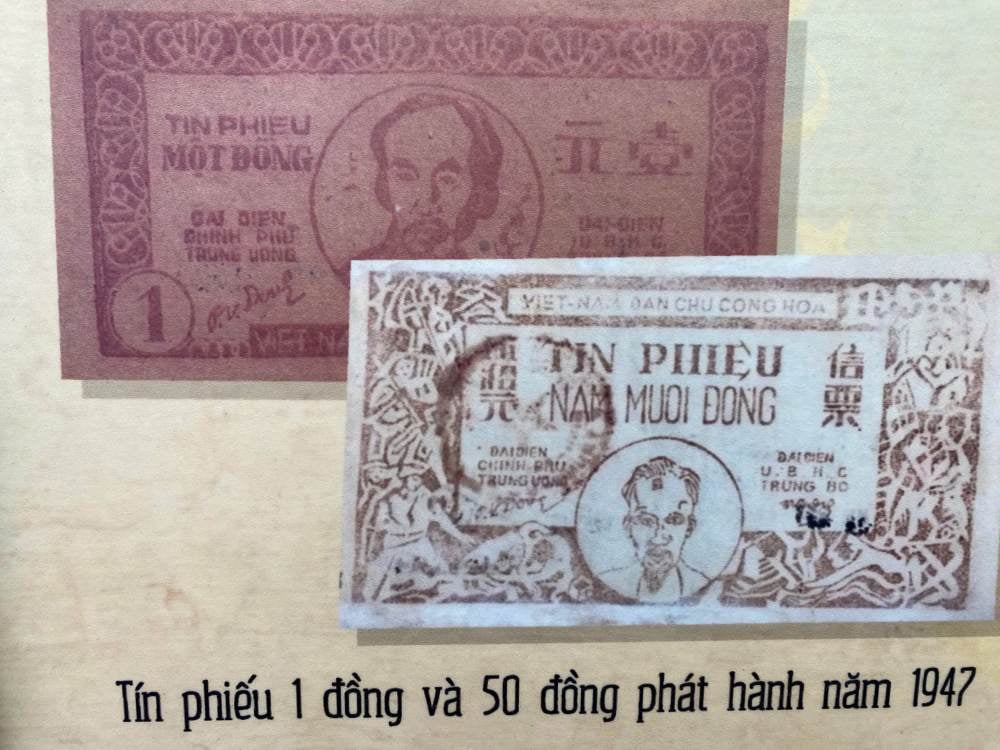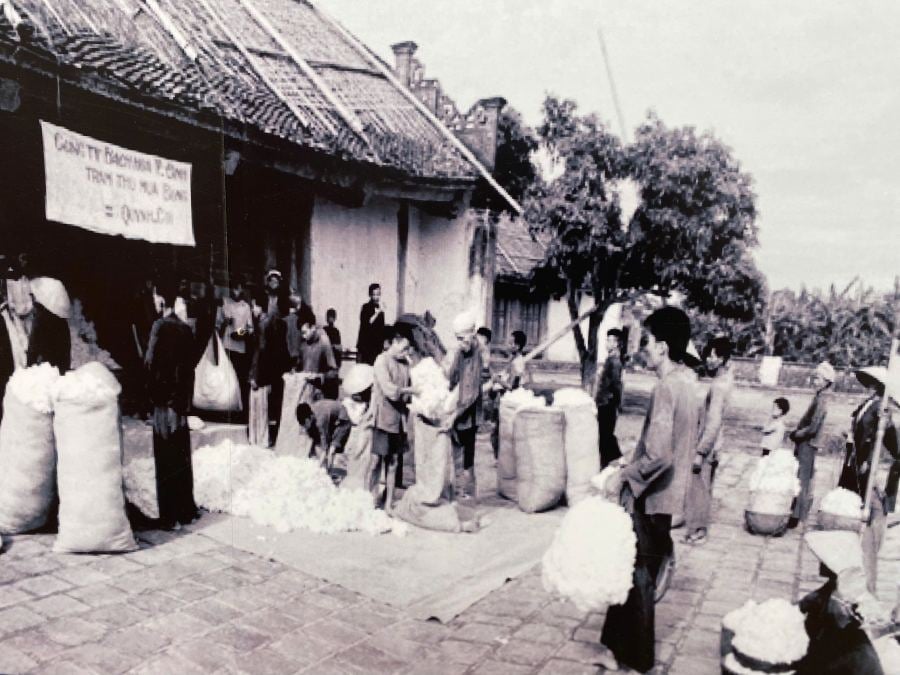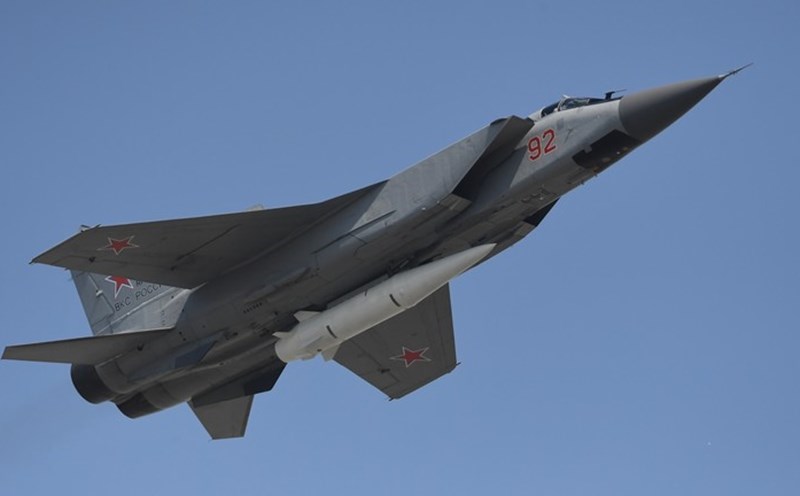During the two long-term resistance wars against France and the US, until after the liberation, the country faced countless difficulties due to the prolonged war. The Party and the State have had to find many ways to help the people revive the country's economy.
At the National Achievements Exhibition, many documents, images, and artifacts from the war and the subsidy period are displayed, recalling memories and emotions for many generations of visitors to the exhibition.
Veteran Tran Dinh Duc is 78 years old this year, still in good shape and sophisticated, he jokingly said, "I am only 2 years younger than the country". Mr. Duc has gone through many ups and downs, witnessing periods of change in the history of the nation. He said that looking at images, artifacts, and documents at each stage moved him.
But, above all, the insect fan, the rice books of the subsidy period, had a strong impact on his emotions, because they recalled many memories and memories of him and his family during those difficult years.
Toad fans are associated with the memories and memories of many generations of Vietnamese people. In 1958, Thong Nhat Mechanical Power Plant (now Thong Nhat Mechanical Power Joint Stock Company) was established in Hanoi. One of the famous products of this factory is the insect fan.
This fan is also known as a 35 fan because the selling price is 35 VND. The number 35 also shows the value of the fan when the salary of civil servants at that time was only 60 VND.
Besides the insect fan, Rang Dong water poster is also very famous because many Vietnamese families have used this water poster from the subsidy period until the future.

Stamp cards for purchasing food, meat, sugar... are also displayed at the exhibition. The stamp regime started in January55 with the decision to sell rice according to the stamp in Hanoi and ended in the second quarter of 1989.
During this period, most goods are distributed by the State under the stamp and voucher regime. Each person, depending on their job position, profession, and working time, will be issued corresponding stamps and vouchers to buy necessities.
In addition to the purchase voucher stamp, there are other "famous stars" of the subsidy period such as the food book and the gasoline supply book.
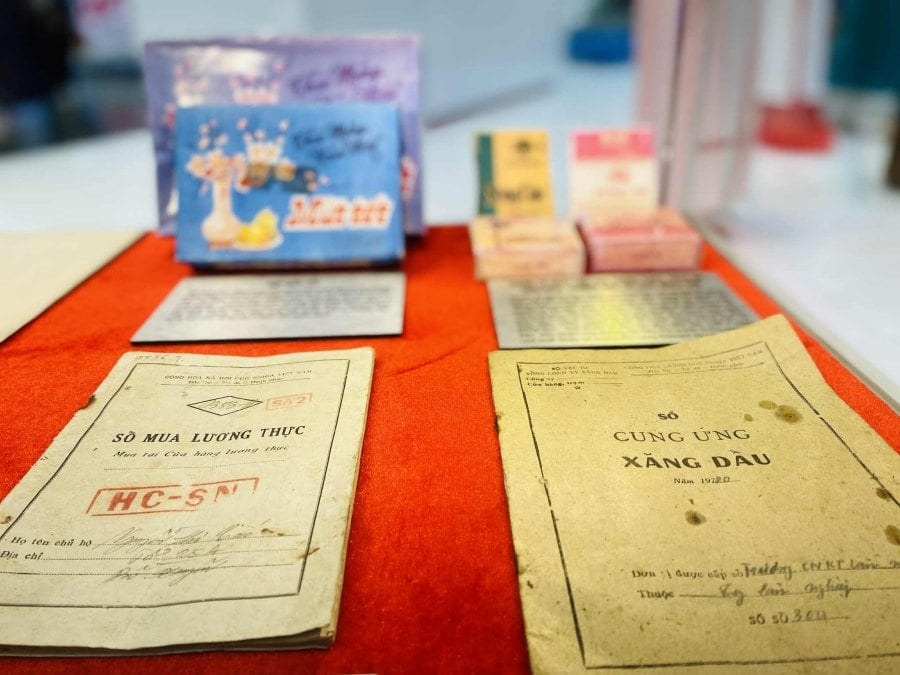
The food book is also known as the "Rice Book" - a very important book during the subsidy period. The book is only issued to households in urban areas and those working in the state sector in rural areas. If I lose this certificate, I won't be able to buy food. Therefore, in the subsidy period, there is a saying, "the face is as stiff as losing the rice book".
Petroleum supply book - Under the subsidy period, petroleum is only supplied according to the quota to units, not widely distributed to the people. Units granted petroleum will receive petroleum supply books. The book clearly states the amount of fuel, type of fuel and time of supply. Since January 1987, petroleum has been widely retailed on the market.
The exhibition displays many other valuable artifacts that few people know about, such as receipts for capital contributions to build the 8/3 Textile Factory.
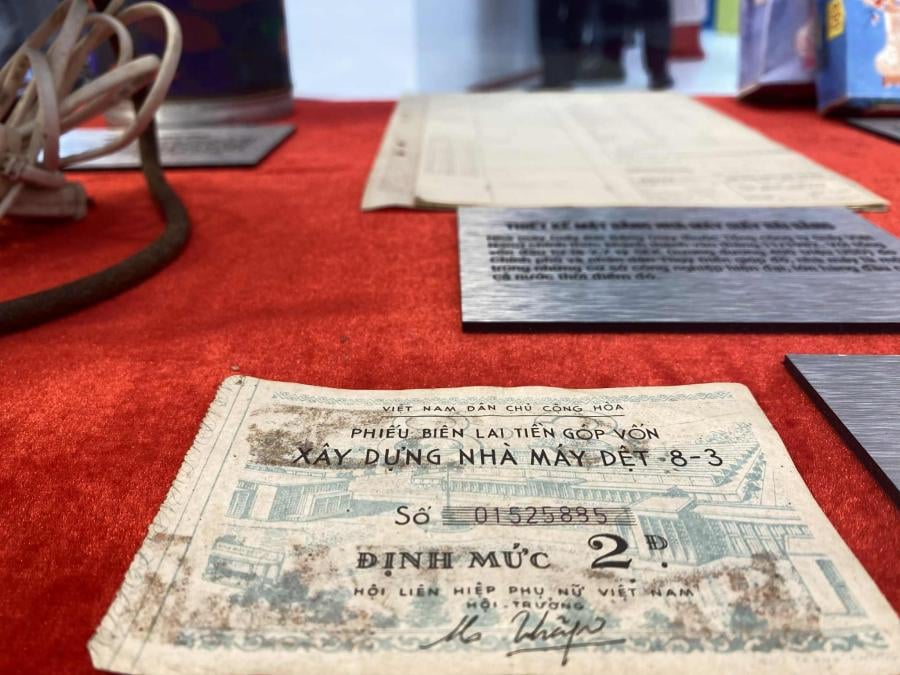
The 8/3 Textile Factory Construction Fund contribution certificate - Bien lai issued by the Vietnam Women's Union, confirmed that the owner of the Bien Lai had contributed 2 coins to build the 8/3 Textile Factory. The factory was inaugurated on March 8, 1965, the largest modern textile factory in the North at that time. In particular, most of the factory's workers are women, including mechanical repair departments.
The 1945-1954 savings book also brings special interest to viewers.
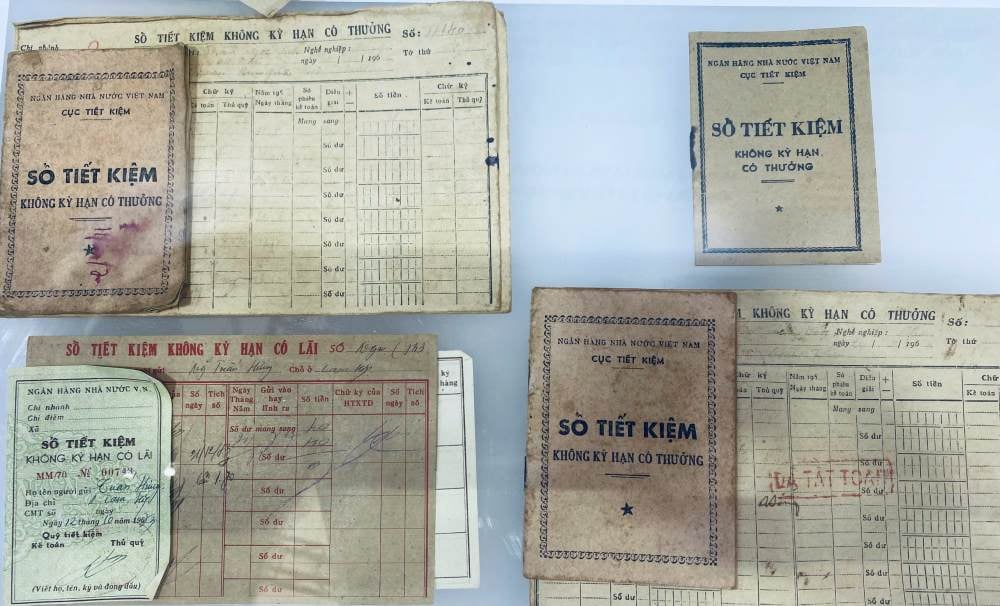
Here are some valuable photos of the country's time spent on the 80 year journey.
